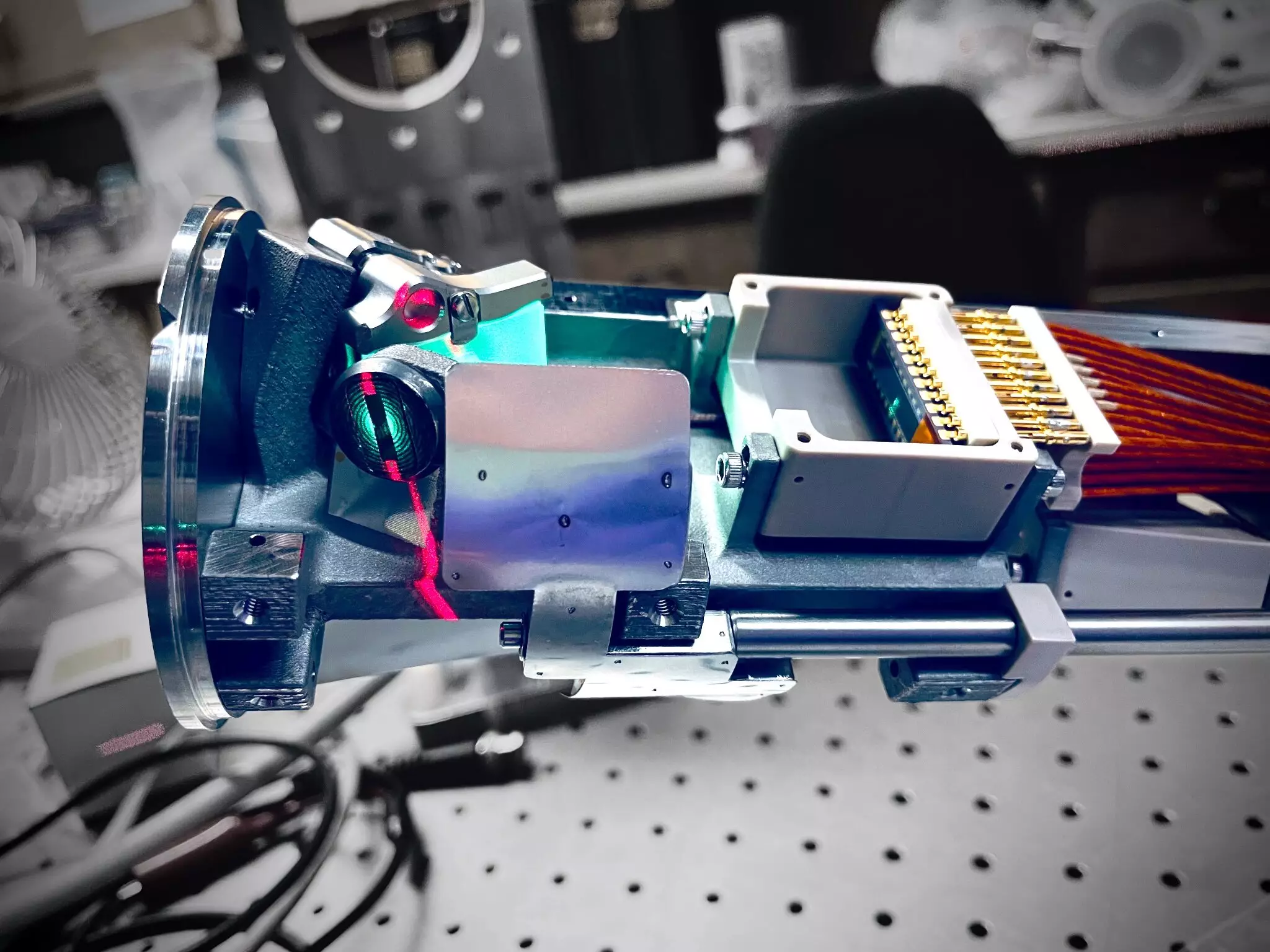Fusion reactions are a key focus for scientists worldwide aiming to generate electricity without producing harmful emissions. The process involves manipulating plasma, the fourth state of matter, to achieve high temperatures and pressure conducive to fusion. ALPACA, a new plasma measurement instrument developed by the U.S. Department of Energy’s Princeton Plasma Physics Laboratory, plays a crucial role in enhancing fusion heat in tokamak facilities.
ALPACA focuses on observing the light emitted by neutral atoms surrounding the plasma inside tokamaks like DIII-D. This diagnostic provides valuable insights into fueling processes, where clouds of neutral atoms break apart into electrons and ions, boosting plasma particle density. By monitoring the density of neutral atoms, scientists can optimize plasma conditions to increase fusion reactions and enhance power generation in future fusion power plants.
One of the distinctive features of ALPACA is its ability to collect plasma light at the Lyman-alpha wavelength, enabling precise measurements of neutral atom density. Unlike previous instruments, ALPACA’s data is clearer and easier to interpret, making it a valuable tool in understanding and controlling fueling processes. The design of ALPACA incorporates advanced technologies like 3D printing, allowing for intricate structures that would be impossible to achieve through traditional machining.
The development of ALPACA showcases the collaborative efforts of researchers from institutions like PPPL, MIT, and North Carolina State University. By combining expertise in engineering and plasma diagnostics, these institutions aim to advance fusion research and improve the efficiency of tokamak-based power plants. The successful operation of ALPACA and its twin diagnostic, LLAMA, demonstrates the importance of comprehensive data collection in optimizing fusion heat generation.
Achieving fusion reactions at the scale required for electricity generation presents numerous challenges, including the extreme temperatures involved. Diagnostics like ALPACA are essential in providing insights into the complex behaviors of plasma, offering a glimpse into what would otherwise be a “black box.” The innovative design and construction of ALPACA highlight the importance of pushing the boundaries of technology to further our understanding of fusion processes.
As ALPACA undergoes testing and integration into fusion research facilities, the potential for enhancing fusion heat generation becomes more promising. By harnessing the capabilities of advanced diagnostics like ALPACA, scientists are inching closer to realizing the dream of sustainable fusion energy. The collaborative efforts of research institutions and the dedication of individuals like David Mauzey in advancing plasma research underscore the significance of ongoing innovations in fusion technology.


Leave a Reply